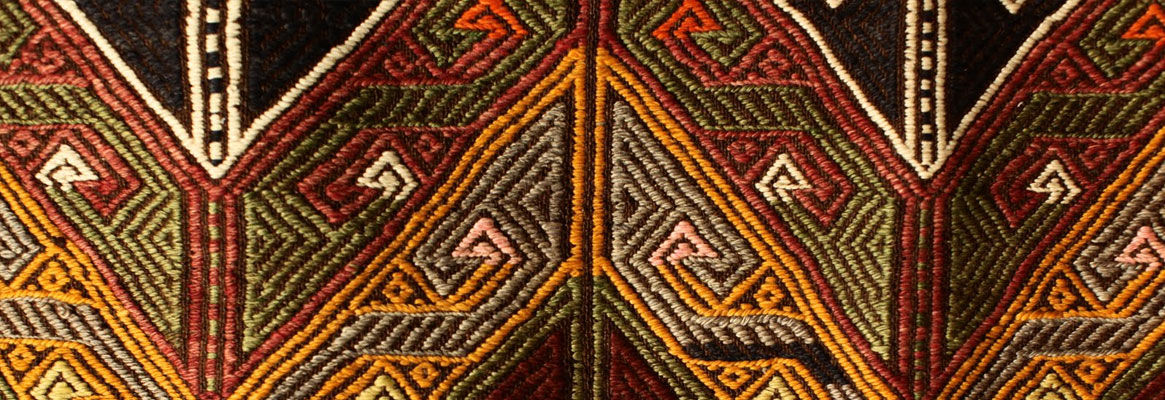Technical Textiles (TT) offers new ways, means andopportunities to the Indian textile industry to sustain the present growth and thrive in the near future. It would offer not only an opportunity to augmentthe growth, but also a new direction for advancement of the industry. The fieldof technical textiles had not received adequate importance in Indian context sofar. However, it is a potential area where the textile industry can excel.
Traditional textiles today are unable to cope with cost of production for various reasons like fast technological obsolescence, high cost of modernization,power, etc. Present product mix of traditional textiles are not remunerativeenough and therefore, more and more ideas of value-addition to textile products are gaining momentum. Technical textiles, in this context, are just perfect.
Nomenclature and Grouping
Non-conventional textiles encompassing a wide spectrum ofend-applications raised a debate as to whether the term industrial textilesused so far is appropriate to be continued, or it is time now that"industrial textiles" having specific meaning should include those products used as part of industrial processes or which are incorporated in some way into industrial products. Textiles used for medicine, defence, agriculture, fishing, etc. donot attach any specific meaning to "industry" but for the age-old practice of using the term "industrial textiles". Today, the term technical textileshas emerged as the most widely acceptable term for this expanding field oftextile applications. These technical textiles are defined as textile materialsand products ulactured primarily for their technical performance and functional properties rather than their aesthetic or decorative characteristics.
With the growing dominance of technical textiles,Techtextil, Messe Frankfurt GmbH has classified technical textiles into twelvegroups from the application point of view. They are as follows:
- Agrotech (agriculture, horticulture and forestry)
- Buildtech (building and construction)
- Clothtech (technical components of shoes and clothing)
- Geotech (geotextiles, civil engineering)
- Hometech (components of furniture, household textiles and floor coverings)
- Induech (filtration, cleaning and other industrial)
- Medtech (hygiene and medical)
- Mobiltech (automobiles, shipping, railways and aerospace)
- Oekotech (environmental protection)
- Packtech (packaging)
- Protech (personal and property protection)
- Sporttech (sport and leisure)
Present Scenario of Technical Textiles
As mentioned in the preceding section, the field of technical textiles forms an important part of textiles globally and domestically. The global and national market scenario of technical textiles has been depicted in this section.
Global Scenario
The table below depicts the regionwise global market scenario of technical textiles over the period from 2000 to 2010 as projected by David Rigby, Associates Report on Technical Textiles and Industrial Nonwovens, World market forecast, 2010.
Consumption of Technical Textiles by Region
Ref: David Rigby Associate's Report
From this table, it may be observed that in terms of volume, overall technical textiles consumption is expected to grow from 19. 7 million tons to 23.8 million tons, with a CAGR of 3.8 %, during the period from 2005 to 2010. The developed countries viz., North America and West Europe have been forecast to have a decelerating growth while South America, Eastern Europe and Asia are expected to grow well during the same period. As highlighted, the Indian market for technical textiles is expected to expand for technical textiles.
Indian Scenario
A systematic survey had been undertaken by Ministry of Textiles (MOT) to assess the progress of technical textiles in India. With this study, it is established that India is yet to find a significant place in the global scenario in this area. Traditionally, Indian textile industry is composed of four sectors, viz., composite mill sector, decentralised powerloom, hosiery and hand loom sectors. The Indian textile industry was dominated by the composite mill sector in the post-independence period. Technical textiles did never find a place of priority in this sector, though a few mills produced a limited range of industrial textiles in their product mix. However, facing stiff competition from the powerloom sector, gradually the composite mill sector suffered various set backs. Even in their revival effort, technical textiles did not find a strategic place as deserved. They still focused their priority in modernising conventional apparel & home textiles, yarn manufacturing, etc.
Market Scenario Technical Textiles
Market Scenario Technical Textiles
So far, the contribution of Indian textile industry towards technical textiles was restricted to a few low technology and less sophisticated items like tarpaulin, industrial filter cloth, bolting cloth, textiles for luggage, decatatising fabrics, tyre cords, belting, etc. Another area of notable contribution of the Indian textile industry, particularly the decentralised sector is textiles for strategic application, viz., national security. For example, parachute canopy fabrics used for man-dropping, supply dropping, brake parachute application, etc. have been largely indigenised and even exported to other countries, even if in small quantities. Indigenised aerospace textiles have contributed significantly for the success of aviation, space and missile programmes.
A slow but perceptible sign of growth has been observed in a few specialised fields. Use of various automotive textiles, structural canopies and awning, protective textiles, defence textiles, etc. has already started in the country. The use of geo-textiles for various applications including construction activities on many infrastructural projects has been well documented. Consumption of certain medical and health care textiles is growing in the country. Technical textiles in the form of shelter, protection, transportation, etc. are most suitable from the point of logistics for the victims of cyclone, draught, flood, earthquake, fire, etc., which are rather frequent events in our country every year. With the Indian population being second largest in the world, it would not be possible to avoid or contain the demand for technical textiles.
As projected from the ECTT report on technical textiles, the consumption of technical textiles in the country is expected to grow from Rs. 31,418.4 cr. to Rs. 44, 628 during the period from 2003 - 04 to 2007 - 08. Further, as per an internal document prepared by the Textile Ministry, it is estimated that the technical textile market would grow to Rs. 78,060 cr. by 2014 15 with an annual growth rate of 14 %. Till date the Indian textile industry is barely able to support the country's demand.
A few highlights of the Indian market scenario for Technical textiles are as below:
-
India is an emerging economy and whether technical textiles can be indigenised, their markets are bound to grow on globalisation.
-
The value addition in technical textiles is slowly but steadily shifting from raw materials and intermediate products to downstream industries in which India has a strong base and only needs strategic augmentation.
-
Downstream processes generate relatively more employment and are influenced by Iabour cost. The labour cost in India is competitive compared to developed countries.
-
Although the contribution of India in technical textiles in global perspective is insignificant, the breakthroughs achieved by the decentralised sector in the areas of technical textiles related to defence, national security and aerospace applications, points to the fact that given an opportunity and the right incentives, our technocrats would help the country to catch up fast in the field of technical textiles. Projected global business of technical textiles worth US$ 72 billion by the year 2005 will have a share of more than 50% in Asia. The growth in Asia is expected to be 6.5%, with the projected growth rate being merely 2.2% in the developed countries. This demands that India take strong and urgent initiatives in technical textiles with committed and focussed but realistic targets based on sound strategies.
-
In spite of serious challenges, technical textiles provide great opportunities for containing imports, by indegenisation and encouraging exports of technical textiles which are known for high value addition.
-
The role of technical textiles has become so eminent that the future of textile industry in the next few decades will be determined by its performance in the area of technical textiles.
-
Indigenisation of technical textiles will not only contain import and achieve strategic self sufficiency in sensitive and emerging areas of applications like defence, aerospace, sustainable development, waste management, etc. but also provide new avenues of value added exports. Promoting technical textiles as a tool of value addition for survival and revival of Indian textile industry holds a high potential of success.
Constraints of this Segment
Dominance of the Decentralized Sector
The composite sector rarely found receptive to technical textiles and the market changes. In contrast the decentralised powerloom sector has helped the country through indigenisation of certain technical textiles, particularly in the areas of strategic significance, i.e. national security. While the country is legitimately proud of such technological breakthroughs, there was no money and volume demand in such fields of technical textiles. Further technical textiles demand simultaneous development of both products and markets. Since the limited production had mainIy remained with the decentralised sector, which did not have adequate resources and financial backing for product development and marketing these textiles, no significant roughs in volume terms has been achieved so far.
Absence of Regulatory Legislation
So far, no attempt has been made by the Government to boost the market development of technical textiles. For example, there is no legislation for mandatory use of the fire retardant in high-rise buildings, in public places like exhibitions, cinema halls, etc. There is no environmental legislation for the use of geotextiles and geomembranes in waste containment for disposal of hazardous wastes as well as for industrial and municipal effluent treatment facilities.
Technical developments need support from a regulatory framework based on scientific rationale. For example, airbag technology in automobile is identified as a future prospect in Western countries because there is a regulation that new car on road must incorporate airbag technology for the safety of the driver and passengers. Similarly, infant garments in US must be fire retardant, which compels production of such textiles.
Deterrents for Entrepreneurs
In order to promote the production of technical textiles, the first and foremost need would be to attract entrepreneurs in the field of technical textiles. Entrepreneurs have so far kept away from the technical textiles in view of the following deterrents:
-
Technical textile and marketing aspects thereof are highly complex. Indian entrepreneurs in textiles have so far not faced this complex situation and therefore, may have genuine doubts and apprehensions about success in such ventures.
-
Specific technical textiles demand specific raw materials, machinery and equipment, mostly to be imported and therefore, requiring huge capital towards the project cost.
-
Technical textiles being at an evolving stage in India, generation of technology for product development and establishing specific markets with adequate volumes require huge working capital for a minimum period of 5 years before the entrepreneur could expect fruits of high value addition usually associated with technical textiles. Besides, market development will require sustained promotional efforts which need substantial investments as well as lead time.
-
Developed countries have reached a point of saturation or maturity in bulk of the technical textiles and are gearing up to enter developing countries including India in a competitive manner in globalised markets. They have the backing of overall experience in various facets of technical textiles and financial muscle, while Indian entrepreneurs have little or no experience in this direction.
-
India being a developing country, the existing norms and mandatory requirements of technical textiles for specific end applications are either outdated or non-existing. As a result, entrepreneurs have an uphill task of introducing technical textiles to end users in the Indian market.
Strategies for Promotion of Technical Textiles in India
Although various quarters of textile industry have started identifying the concept and composition of technical textile and related products, still there are prevalent apprehensions to venture into this field. Some strategies required to be put in place as early as possible are identified as below:
Application Areas
-
To identify application areas with a strong potential in the domestic market and which will in the long run, help exports. A Ministry of Textiles survey has helped in this regard.
-
Initially such items should be selected for which there exists know-how, production facilities, raw material, etc. Such products may be on the lower end of technology but should have a big impact in terms of volume, value addition, etc. The existing production capacity/ capability with incremental addition to facilities may be focussed. It will create a favourable psychological impact and climate for future investment in more demanding products.
-
Indigenisation of value added products of relatively easier technology capable of quick assimilation should be aimed at the beginning.
-
To develop technical textiles in high tech application of aerospace, defence, etc.
Raw Materials
-
Attempts should be made to use indigeneously available fibres - both natural and manmade, for technical textile products. However, it is not a deterrent to import high performance fibres for specific products where volume is less or ab initio development of polymer technology will be prohibitively costly.
-
To exploit the traditional eco-friendly natural fibres like cotton, jute, coir, hemp, etc. by product diversification with value addition for medical textiles, agro textiles, etc.
Manufacturing Facilities
-
Re-orientation of production facilities, training of existing manpower to channalise their technical ability to the new technology of technical textile may be deployed.
-
Many of the technical textile products can be produced by the conventional process, machines and equipments, depending upon the application area and functional parameters. Likewise degree of precision required for the end use may be carefully selected. India has a fairly good infrastructure of spinning, weaving, wet-processing, lamination, coating, etc., which, in the present form are capable of producing varieties of technical textiles. Such items should be identified and marketing efforts should be made accordingly.
-
Textile manufacturers venturing into the area of technical textiles need to examine the level of their in-house technologies, know-how and competence and make concerted efforts to modify them to the extent possible to the requisite level. If it is inescapable to import technology in high-tech areas of technical textiles, it is essential that efforts should be aimed at acquiring state-of-the-art technology as far as possible and to be prepared to invest, assimilate, innovate and improve the technology.
-
To uplift the faltering textile industry with the help of proper product mix, which will include value added technical textiles falling within their existing production capacity.
R&D and Quality Assurance
-
Research & development, consultancy, quality management, testing and evaluation hold the key to the success of capturing a substantial share of the competitive global market of technical textiles. Accordingly, substantial investment in R & D will be unavoidable.
-
Strong world class testing facilities for accurate and relevant evaluation of technical textile must be made available in India to satisfy the stringent and critical requirements of performance related products parameters in the global market.
-
Since most of the technical textiles lose almost their total market value if any of the parameters fails to conform to the specifications, the quality control and quality culture should be of a high order to ensure
"Right the First Time and Right Every Time".
Centers for Excellence
- The field of technical textiles is so vast that, unlike conventional textile materials, it would not be possible to provide support services for all fields from one organization. Therefore, it would be appropriate that numbers of centers should be opened across the country to integrate overall development of the field.
Market Development
-
Product development and production of technical textiles will succeed only if simultaneous market development is also carried out to sustain demand.
-
Success of a new technical textile product will essentially depend on the user of the product. Therefore, it will be necessary to have close interaction between textile technologists and technical personnel of the users, viz., engineers, doctors, etc. who will use such technical textiles.
Literature, Standards, Information Technology
-
It will be essential to set up infrastructure for IT in technical textiles. Many of the specifications, directives, literature, books, etc. are very costly and most of the manufacturers will not be able to afford them. Such IT facilities should be created centrally for dissemination to the concerned users.
Target Setting
-
Strategy should be to fix up a target of 10% - 12% of global market in next 10 years. Accordingly, the planning should be made to ensure the inputs and to offer a congenial environment, both regulatory and fiscal, to achieve the target of almost about US$ 6-8 billion share in the global technical textile market in next 10 years or so.
-
To fulfill the social objectives of providing cheaper and efficient products like shelters, protective clothing, etc. to the masses in the event of disasters like flood, draught, earthquake, etc. Logistically, it will also be easier and convenient to position such products more speedily than conventional material.
SASMIRAs role in Technical Textiles
SASMIRA has been working in this emerging area of textiles for the last 10 years. A series of seminars, workshops, training, etc. has been conducted over the period, and with its concerted effort, technical textiles have found a place in the New Textile Policy of the Government of India. Accordingly, SASMIRA has made certain endeavors towards supporting technical development in the country.
Conducting Seminars/ Workshops to create awareness in the field of Technical Textiles
In order to create awareness among entrepreneurs in the field of technical textiles, SASMIRA has been organising seminars and workshops in various segments of technical textiles for the past one-decade. These seminars and workshops have been listed below.
-
Seminar on Technical Textiles - 1998
-
Seminar on Automotive Textiles - 2000
-
Seminar on Geosynthetics - Emerging Opportunities in India - 2000
-
Seminar on Spandex - Emerging Opportunities for Apparel and Technical Textiles in India - 2001
-
International Seminar on Technical Textiles - 2001 Workshop on Geosynthetics - 2002
-
Seminar on Technical Textiles in India - Today and Tomorrow - 2005
-
Technical Textiles - 2006 (with FICCI) - September 2006
SASMIRA's R & D efforts have been dedicated to development/ indigenisation of Technical Textile Products
Considering the importance of this field SASMIRA started developing various products through sponsored projects with an aim to be prepared with available technology of specific products. These developments include:
-
Development of Agro-shade Net Fabrics
-
Development of Chemical Protective Fabrics
-
Development of Multilayer Sportswear Fabrics (Refer Fig.1)
-
Development of Soft armour Ballistic Protective Fabrics Development of Pavement Overlay Fabrics (Refer Fig.2)
-
Indigenisation of Woven Geo-grid Fabrics
-
Indigenisation of Airbag Fabrics
-
Development of special finishes for Parachute Fabric
-
Recycling of PET bottle waste to manufacture various (Refer Fig.3) textiles
Certification of Technical Textiles
In order to support evaluation or certification of technical textiles, SASMIRA has a NABL accredited laboratory providing testing and consultancy services for technical textiles.
-
The laboratory provides more than 20 test facilities catering to technical textiles.
-
Specialised test services for geotextiles, automotive textiles, medical textiles, home textiles, industrial textiles are available.
SASMIRA Supports Information Sourcing for Technical Textiles
Apart from the above activities, SASMIRA serves as knowledge center for technical textiles in the following ways:
-
A well-equipped library with publications on technical textiles is maintained. SASMIRA assists entrepreneurship development in technical textiles.
-
Education and training programme (customized) on technical textiles are also catered from SASMIRA.
-
Few officers of SASMIRA are Member of BIS committees dedicated to formulating norms for evaluation of technical textile materials and products.
Concluding Remarks
Getting success in technical textiles is a complex phenomenon. It needs to address various issues related to materials, machines, processes, technology and marketing. Developed countries and neighbouring developing countries, including China, have successfully ventured into technical; textiles.
Barring a few frontline areas, India has no dearth in terms of technology and the same is manifested by success in indigenising critical and strategic textile materials stated earlier in the paper. What is important is to encourage entrepreneurship into technical textiles and recognising such ventures as knowledge based industry.
As venturing into technical textiles demands both development of products and new markets, there is a high risk factor, for the initial period of 5 to 8 years for the investors. Therefore, a transparent and effective policy matters should be formulated to encourage new entrepreneurships in this business.
Technology Upgradation Fund Scheme (TUFS) of Government of India provides an important opportunity for the willing entrepreneurs to venture into this emerging area of textile industry. Various machinery and equipment required for manufacture of technical textiles have been included in this scheme. Now, since the Union Government has realized the importance of this field, it is expected that new sops in the next five-year plan may yield expected results.
SASMIRA would continue to make persistent efforts to promote this expanding field of technical textiles for the betterment of the Indian textile industry.
To read more articles on Textile, Industry, Technical Textile, Dyes & Chemicals, Machinery, Fashion, Apparel, Technology, Retail, Leather, Footwear & Jewellery, Software and
General please visit http://articles.fibre2fashion.com
To promote your company, product and services via promotional article, follow this link: http://www.fibre2fashion.com/services/article-writing-service/content-promotion-services.asp








